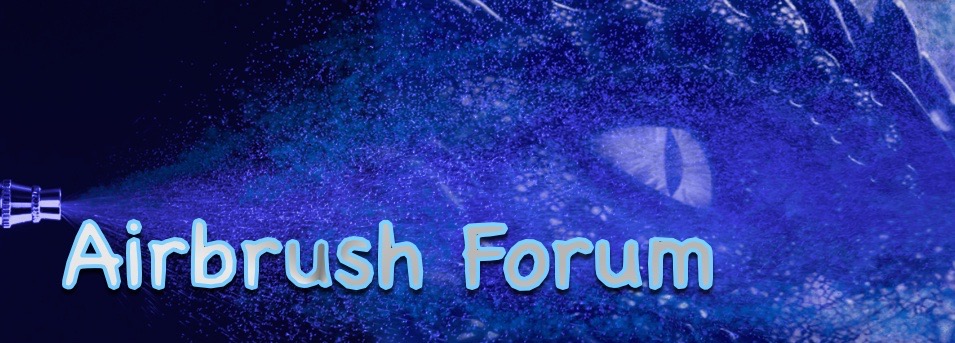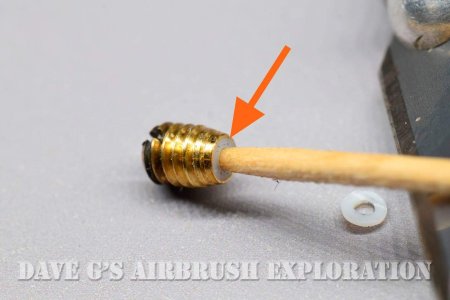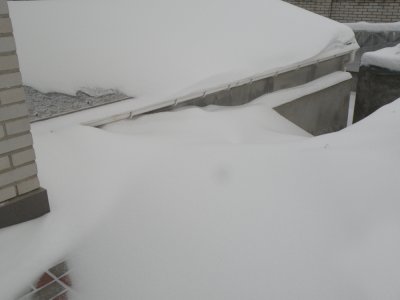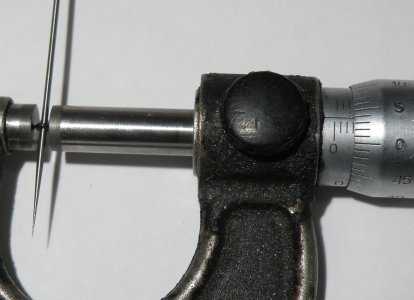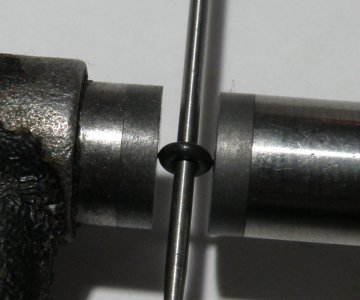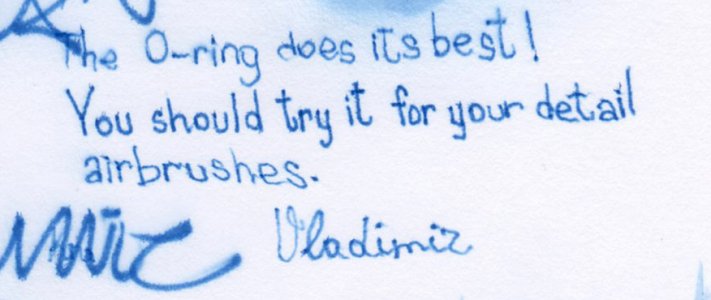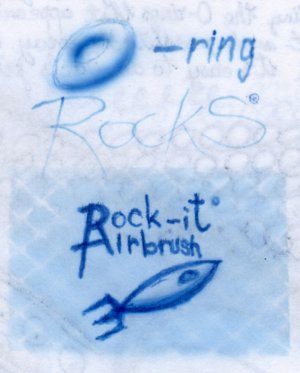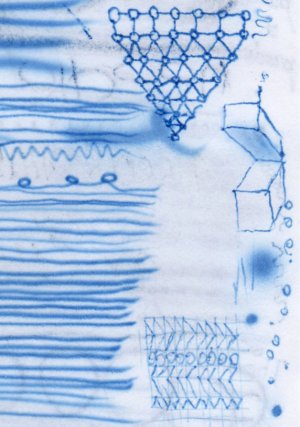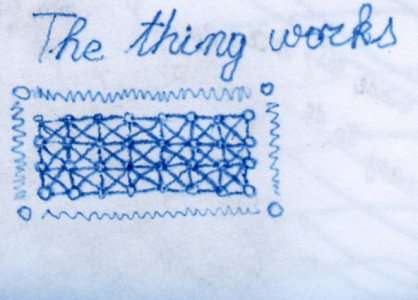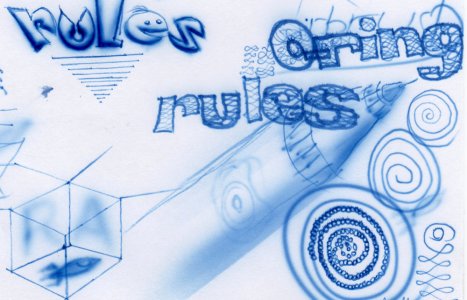Vladimir
Detail Decepticon!
Many long term users of the airbrush tool know that old airbrushes came with rubber seals for the needles. Now most ABs have Teflon (PFTE) needle packing. These two types of the needle seal have their pros and contras. Great advantage of the rubber seal is its smoothness that gives great feel of the needle movement while painting. We mentioned for many times here on the forum how old type of the O-rings (rubber one) smoothly work. But there’s big disadvantage here also. Rubber can’t bear the solvents. This feature does not allow to use urethane paint for airbrushing, while watarbased paint is no problem. On the other hand we have teflon packing that is completely solvent proof and so extremely durable, that will serve for decades at least, if not for entire life of the airbrush. Disadvantage of this type of the seal is material properties. Teflon is very slick material, but it is much harder than rubber.
O-ring for sealing the needle has different shape as you can see from the photo. As a result, we have bigger contact area of the seal and the needle, than in the case with the rubber O-ring. This affects the needle movement.
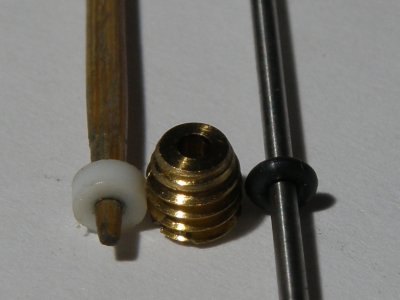
Another thing about two types of the seals is tightening the seal inside the AB body. For the rubber O-ring you need just screw in the packing nut almost without tightening and the needle is perfectly sealed, while with the teflon you need to find sweet spot between good seal and good movement of the needle. Low tightening and you will have paint leak, if you have slightly more tightened packing, the result is stiff movement of the needle.
Funny thing happened when I bought my first old micron, old microns all came with rubber O-rings from the factory. I figured that out while cleaning the Ab after some test spraying. I used urethane paint for that and cleaned the brush after with the urethane basecoat thinner. I felt that something liquid started to run over my fingers. I thought to myself then: I have cracked body! I didn’t remembered then that old ABs had rubber O-rings as the needle packing. And the thinner on my fingers was very good reminding.
I didn’t remembered then that old ABs had rubber O-rings as the needle packing. And the thinner on my fingers was very good reminding.
I have some old ABs and all of them have rubber O-rings as the needle packing. The fact that I use only urethane paints for airbrushing does not allow me to use rubber packing, so I ordered custom made teflon packings. You can see them on the photos. Some are treated after the lathe work and ready to use, and some are rough and untreated. Definitely, in old ABs I have custom teflon packings installed and they work as other good teflon solvent proof packings do.
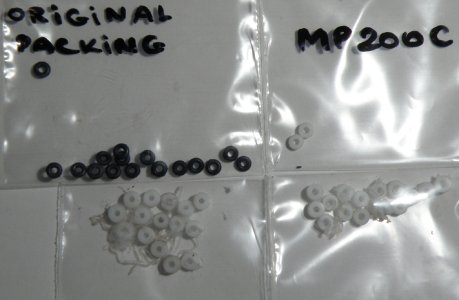
Besides that I ordered some custom made packing nuts to play with, but never did the test. What do you think would be the best, shorter or longer variant? Original one is the first on the left, any other is custom made.
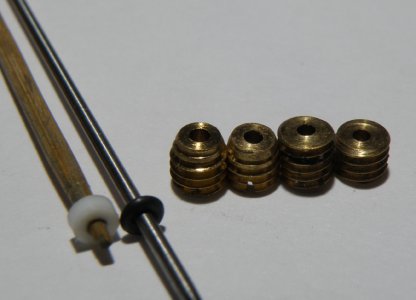
BTW, small tip on the toothpick. You can use them as the O-ring and seal packing nut install tool (and removal also).
Without the sharpening the toothpick tip you can clean 0.5mm nozzles (Eclipse).
It’s just a tool I use in ABing since the first day of my ABing
One thing I couldn’t forget is the softness of needle packed with the rubber O-ring. This feature isn’t that important in background painting or for not detail work, it doesn’t really matters how you feel the needle movement or starting the spraying at these kind of work.
But when we talk about detail illustration freehand work, where you need precision, the teflon seal is far away from soft and predictable spray start (the trigger response) compared to the rubber seal.
We have also talked here on the forum that it would be great to have soft and solvent proof seal for the needle, as many of us require that precise spraying from the detail airbrushes and not everybody uses waterbased paint.
Recently something with these desired features has appeared on the market and available at Rockett Airbrush. I got some new type O-rings not so long ago from there and started to test them.
How new O-ring looks you can see on the photo. It's on the right alone and the other are old type O-rings on the left (many).
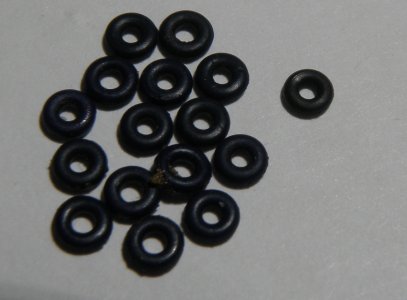
I have to say, it’s not complete test with the conclusions made, but testing in process. I think, it would be interesting for everyone to watch how the things go not knowing the end result. I do know it either.
What I expected from newly released product is soft feel and solvent proof seal.
I can say just now that it is as soft as rubber seal is, it’s just the same smooth at work.
As the urethane paint for couple of days is in the airbrush and nothing like paint is seen through the micron airbrush window in the AB body around the seal, I could presume that it’s also solvent proof.
I didn’t now what airbrush to choose either HP-SB+ or CM-SB, but when it came to changing the seal CM-SB stood aside as it has built in teflon seal in the packing nut itself. I have no idea how to normally remove it and remembered that I have another microns with different packing nuts, so my test gun is MP-200A.
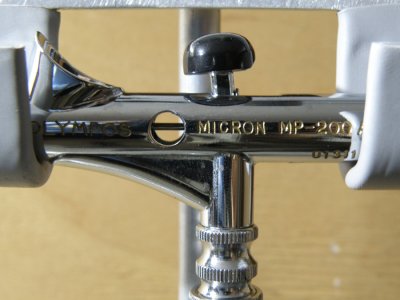
Here's the suggestion for Rockett Airbrush: to think over manufacturing the needle packing nut for new type of microns to use with new O-rings.
On the smoothness for detail work and the trigger response I can say that’s it, just as I wanted! Just great! Now I don’t guess when the paint would start going through the nozzle, but I just look at the place where the paint will lay down. No expectation for the paint flow start and anything, just normal work. The needle movement becomes the continuation of your finger movement, what would you need more! It’s like your fingertip is on the needle tip and there’s no trigger or the seal resistance in the AB. It’s like sniper’s rifle that throws bullets exactly where you see through the optics, so does your airbrush.
Next moment is the solvent proof features. I can’t say from the start how well it is solvent proof.
As for making the conclusion on this property we need time.
One thing that will help to estimate this feature is the dimensional stability of the material exposed to the basecoat thinner in the paint. I’ve made the measurement of new O-ring as it arrived from the seller. I will remain the paint in the airbrush for more than a week, what I’d do with ABs while making custom paint job, and will make the measurements of the O-ring again after the AB cleaning. I think the results will be representative.
The measurements as you can see them.
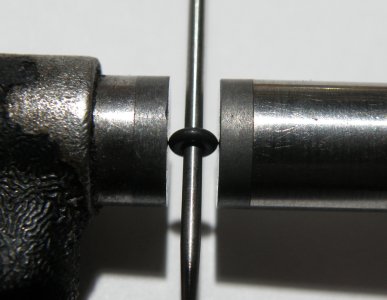
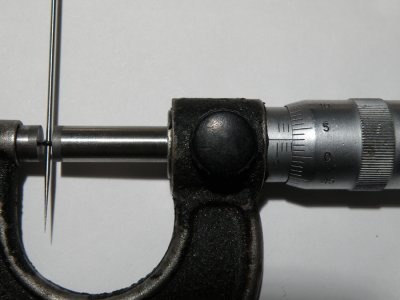
Another thing that we should expect from the product is its durability, as we have constant friction of the needle and the O-ring and I wonder for how long the material would bear this friction. I mean it’s all about the product lifetime, or at least for how long this seal will be giving good and expected work of the seal.
BTW, the test was done with some other custom parts installed in the AB and I like the results not less than I like the results with testing of new O-rings. Will post a thread later, I think.
That’s it for now. To be continued.
O-ring for sealing the needle has different shape as you can see from the photo. As a result, we have bigger contact area of the seal and the needle, than in the case with the rubber O-ring. This affects the needle movement.

Another thing about two types of the seals is tightening the seal inside the AB body. For the rubber O-ring you need just screw in the packing nut almost without tightening and the needle is perfectly sealed, while with the teflon you need to find sweet spot between good seal and good movement of the needle. Low tightening and you will have paint leak, if you have slightly more tightened packing, the result is stiff movement of the needle.
Funny thing happened when I bought my first old micron, old microns all came with rubber O-rings from the factory. I figured that out while cleaning the Ab after some test spraying. I used urethane paint for that and cleaned the brush after with the urethane basecoat thinner. I felt that something liquid started to run over my fingers. I thought to myself then: I have cracked body!
I have some old ABs and all of them have rubber O-rings as the needle packing. The fact that I use only urethane paints for airbrushing does not allow me to use rubber packing, so I ordered custom made teflon packings. You can see them on the photos. Some are treated after the lathe work and ready to use, and some are rough and untreated. Definitely, in old ABs I have custom teflon packings installed and they work as other good teflon solvent proof packings do.

Besides that I ordered some custom made packing nuts to play with, but never did the test. What do you think would be the best, shorter or longer variant? Original one is the first on the left, any other is custom made.

BTW, small tip on the toothpick. You can use them as the O-ring and seal packing nut install tool (and removal also).
Without the sharpening the toothpick tip you can clean 0.5mm nozzles (Eclipse).
It’s just a tool I use in ABing since the first day of my ABing
One thing I couldn’t forget is the softness of needle packed with the rubber O-ring. This feature isn’t that important in background painting or for not detail work, it doesn’t really matters how you feel the needle movement or starting the spraying at these kind of work.
But when we talk about detail illustration freehand work, where you need precision, the teflon seal is far away from soft and predictable spray start (the trigger response) compared to the rubber seal.
We have also talked here on the forum that it would be great to have soft and solvent proof seal for the needle, as many of us require that precise spraying from the detail airbrushes and not everybody uses waterbased paint.
Recently something with these desired features has appeared on the market and available at Rockett Airbrush. I got some new type O-rings not so long ago from there and started to test them.
How new O-ring looks you can see on the photo. It's on the right alone and the other are old type O-rings on the left (many).

I have to say, it’s not complete test with the conclusions made, but testing in process. I think, it would be interesting for everyone to watch how the things go not knowing the end result. I do know it either.
What I expected from newly released product is soft feel and solvent proof seal.
I can say just now that it is as soft as rubber seal is, it’s just the same smooth at work.
As the urethane paint for couple of days is in the airbrush and nothing like paint is seen through the micron airbrush window in the AB body around the seal, I could presume that it’s also solvent proof.
I didn’t now what airbrush to choose either HP-SB+ or CM-SB, but when it came to changing the seal CM-SB stood aside as it has built in teflon seal in the packing nut itself. I have no idea how to normally remove it and remembered that I have another microns with different packing nuts, so my test gun is MP-200A.

Here's the suggestion for Rockett Airbrush: to think over manufacturing the needle packing nut for new type of microns to use with new O-rings.
On the smoothness for detail work and the trigger response I can say that’s it, just as I wanted! Just great! Now I don’t guess when the paint would start going through the nozzle, but I just look at the place where the paint will lay down. No expectation for the paint flow start and anything, just normal work. The needle movement becomes the continuation of your finger movement, what would you need more! It’s like your fingertip is on the needle tip and there’s no trigger or the seal resistance in the AB. It’s like sniper’s rifle that throws bullets exactly where you see through the optics, so does your airbrush.
Next moment is the solvent proof features. I can’t say from the start how well it is solvent proof.
As for making the conclusion on this property we need time.
One thing that will help to estimate this feature is the dimensional stability of the material exposed to the basecoat thinner in the paint. I’ve made the measurement of new O-ring as it arrived from the seller. I will remain the paint in the airbrush for more than a week, what I’d do with ABs while making custom paint job, and will make the measurements of the O-ring again after the AB cleaning. I think the results will be representative.
The measurements as you can see them.


Another thing that we should expect from the product is its durability, as we have constant friction of the needle and the O-ring and I wonder for how long the material would bear this friction. I mean it’s all about the product lifetime, or at least for how long this seal will be giving good and expected work of the seal.
BTW, the test was done with some other custom parts installed in the AB and I like the results not less than I like the results with testing of new O-rings. Will post a thread later, I think.
That’s it for now. To be continued.
